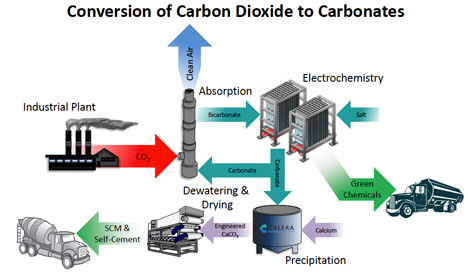
Although we seem to use concrete in just about every type of building, most of us don’t seem to realize how harmful it is to the environment. Concrete production is responsible for releasing an astonishing amount of carbon dioxide into the environment – about one ton for every ton of cement produced. Stanford University biomineralization expert Brent Costantz saw a problem with that number and decided to do something about it. He looked to the coral reefs for inspiration. Corals pluck CO2 from the water to help them calcify and build their exoskeletons, a process that leads to massive coral reef structures.

Costantz discovered a way to mimic this action for making cement. By taking the CO2 waste from a power company and dissolving it in sea water, carbonate was formed. The carbonate mixes with calcium in the sea water and solidifies to make an eco-friendly version of cement. The incredible process goes by the name of Calera, and the technology could be applied to new or existing power plants to capture and convert their CO2. The solids created in the process may not be able to replace the portland cement component of concrete entirely, but the technology truly is an amazing breakthrough in the field of greener construction materials.

